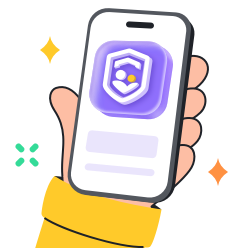This is the era of technology and sophisticated electronic gadgets. Kids nowadays love to have every new device that comes on the market. And as a parent, you fulfill your kids’ desires and buy them the latest tablets, smartphones, or smart toys. All this is a good part of life, but the worrying thing is that these devices and gadgets are used all the time. They are used with sticky fingers. Sometimes snack crumbs fall onto them and get stuck in their corners. So it becomes a basic need to keep them clean. In this blog, you will learn how to clean electronics and hygiene habits that you can teach your kids.
Why it’s important to clean electronics regularly
At home, you have many electronic devices, including a TV, phones, your kid’s laptop, or PC. Some of these devices remain stationary, while others can be carried around. But it doesn’t matter if devices are fixed or portable, dust or fingerprints eventually get stuck on them. That is why it is very important to clean your electronic devices regularly. Let’s understand it better:
Bacteria and viruses on high-touch surfaces
Your phone goes with you everywhere. And it touches your hands, your pockets, your kitchen counters. Even sometimes you put your phone on the bathroom sink. This means it can carry germs like E. coli or the flu virus. It can affect you or your kids easily because when you share devices without cleaning them, they can spread those germs. However, regular cleaning cuts down this risk.
Dust and grime can damage electronics
Dust enters your house every day, and sometimes it is not even visible. These small particles are set on electronics. These particles may seem harmless, but they can block tiny vents and ports in electronics. And over time, this can cause your phone or laptop to overheat. The reason for it that these dirt particles affect the movement of your device’s internal cooling system.
If the dust particles are not cleaned in a timely manner, they can be dangerous for your electronics. This is because when dust clogs up internal parts or grime interferes with buttons and ports, your devices may stop working properly. And this could cost you a hefty amount to repair, or they could permanently damage your device. This is why regular cleaning helps you avoid unnecessary expenses and extends the lifespan of your electronics.
Devices last longer with proper cleaning
Cleaning your devices keeps them germ-free. Not only that, but it keeps them working better for a longer time. If you know how to clean electronics the right way, you can avoid costly repairs or early replacements.
General safety tips before cleaning any device
There are precautions you must take before you grab a cloth and start cleaning. There are some basic rules you must follow to avoid damaging your electronics:
Power off and unplug
This is the golden rule. Always turn off your device and unplug it from the charger. This is because it helps avoid electric shock and protects your device from short circuits. Also, after turning off your device, you see dirt more clearly. This especially helps you when you clean any device screen.
Avoid harsh chemicals and water exposure
The second safety measure is never to spray cleaner directly on any screen or port. Because spray liquids can go inside and destroy your device. The other thing that you have to keep in mind is that you should not use bleach, glass cleaner, or anything that smells very strongly. These chemicals can strip away screen coatings or damage the surface.
Use microfiber cloths and safe cleaning solutions
The best way to clean your devices is by using a microfiber cloth. This cloth is soft and dry and wipes dirt easily from the devices. You can spray cleaner on a cloth and then clean your electronics. Just don’t let the cloth get too wet.
Store cleaning tools safely out of children’s reach
The next safety measure is to store cleaning tools out of children’s reach. Because some cleaning tools contain harsh chemicals. In curiosity, kids can swallow or misuse the cleaners. So, keep your sprays, wipes, and clothes in a drawer or a box where small kids can’t reach.
Ensure their devices stay clean and their online experiences are healthy with FlashGet Kids.
How to clean different electronics?
There are many devices in the house, and each device needs a slightly different method of cleaning. Here’s how to clean the most common gadgets safely and properly:
How to clean your smartphone
- Turn off your phone and unplug it.
- Use a dry microfiber cloth to gently wipe the screen and body.
- Dampen a corner of the cloth with a screen-safe cleaner—use only a small amount.
- Clean the camera lens and ports gently with a soft brush or cotton swab.
- Avoid getting liquid into headphone jacks or charging holes.
Clean tablets and iPads (especially kid-used devices)
Power off the tablet completely.
Then, remove any case or cover and wipe it down separately.
Use a damp cloth with mild soap to clean silicone or plastic cases.
Use a microfiber cloth for the screen. For sticky spots, use a bit of screen-safe spray.
Finally, let everything dry before putting the case back on.
How to clean keyboards and computer screens
First, shut down the computer and unplug it.
For screens, use a dry cloth first, then a little screen cleaner if needed.
To clean the keyboard, turn it upside down and tap gently to shake out crumbs.
Then, use a brush or canned air to remove dirt between the keys.
Wipe the keys with a cloth dampened with a bit of isopropyl alcohol.
How to clean game consoles and controllers
- Unplug the console and controllers.
- Wipe down the console body with a soft, dry cloth.
- Use a cotton swab or brush to clean small ports or vents.
- For controllers, wipe the surface gently, then clean between buttons using a slightly damp cloth.
- Avoid pressing too hard or letting liquid reach the inside.
Best electronics cleaning tools for families
Some tools make it easier and safer to clean electronics. Especially when you have children using them often.
Microfiber cloths, screen-safe wipes
These should be your go-to. They’re gentle on screens and can remove fingerprints easily. Wipes made for electronics are pre-moistened and usually safe to use.
UV sanitizers: Are they worth it?
UV sanitizers can kill germs without using any liquid. You just place your phone inside and let it run for a few minutes. They’re helpful but not a must-have. They don’t remove visible dirt, so you still need to wipe your device first.
Avoid bleach or alcohol-based cleaners with kids
These products may clean well, but they’re too harsh for frequent use. And these cleaners are not safe, especially around kids. The reason is clear that strong chemicals can damage the surfaces of electronics and may also harm children if used incorrectly.
Eco-friendly and child-safe options
Look for non-toxic sprays made especially for electronics. Some brands offer plant-based cleaning wipes or reusable cloths. These are safer for both your kids and the environment.
Digital hygiene habits to teach kids
Cleaning devices is only part of the job. It’s also important to teach children how to clean electronics regularly and how to use them responsibly. Teach your kids:
Don’t eat while using electronics
Food crumbs and grease make devices dirty. Teach kids to keep electronics away from meals or snacks. This one habit can reduce 70% of messes.
Wash hands before using shared devices
Handwashing before screen time helps cut down on germs. Make it part of your child’s daily routine, especially if devices are shared between family members.
Wipe down screens weekly
Create a cleaning schedule. Assign each child a “tech day” where they clean their tablet or controller using a cloth and a safe spray. It teaches responsibility.
Use FlashGet Kids to encourage healthy routines
FlashGet Kids is a helpful app that helps build good habits. It makes routines easy to track and fun to follow. Here’s how it can support you in teaching how to clean electronics and practice good hygiene:



- Set reminders for screen cleaning: Get automatic alerts to wipe down tablets, phones, or laptops weekly.
- Limit screen time: Helps avoid overuse, which leads to less mess and fewer germs on devices.
- Parental dashboard: Keep an eye on your child’s habits, hygiene, and screen use from one place.
FAQs
You should clean a child’s tablet once a week at a minimum. If your child eats near it or shares it with siblings, clean it more often. Wipe down the screen, buttons, and case using a soft cloth and safe spray.
It’s best not to use vinegar or alcohol directly on screens. They can damage the protective layer. Instead, use a cleaner labeled as screen-safe or mix a small amount of water with a tiny drop of soap. Always apply the cleaner to a cloth, not directly to the screen.
One of the best ways is to use FlashGet Kids. You can set screen time limits and bedtime rules. You can also create cleaning reminders or reward systems inside the app. This helps reduce overuse and encourages them to keep their devices clean.

